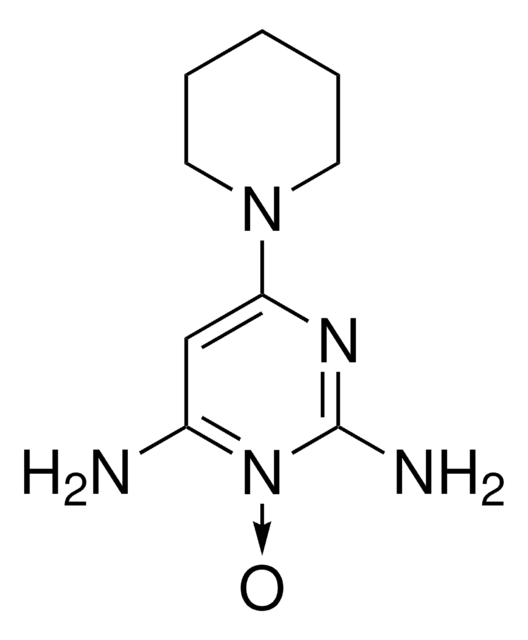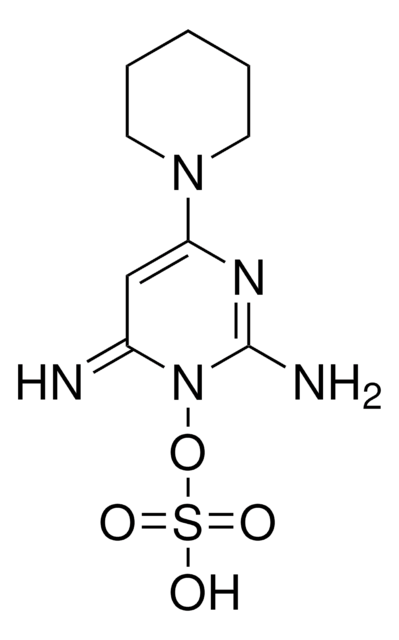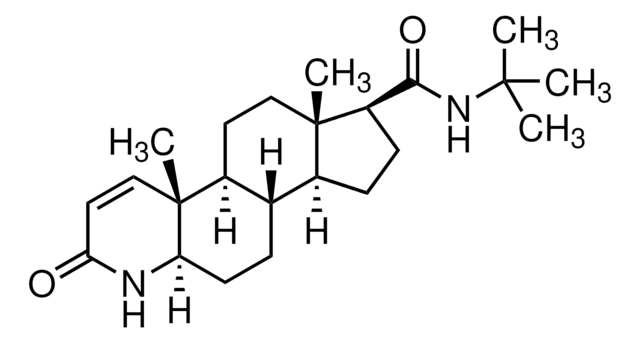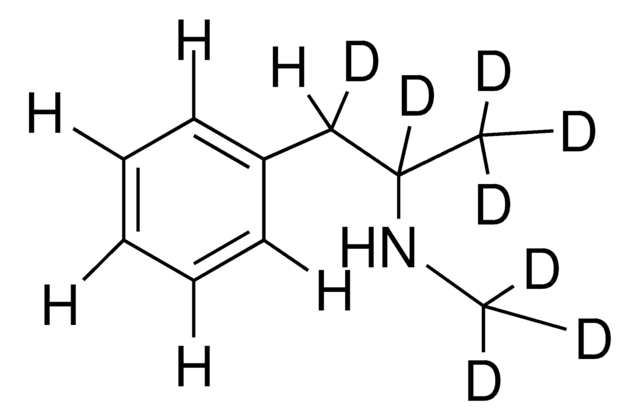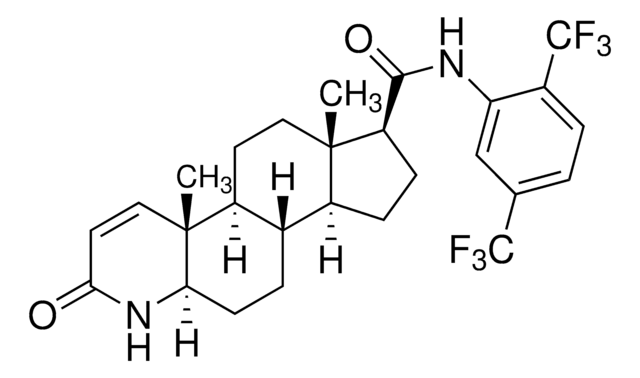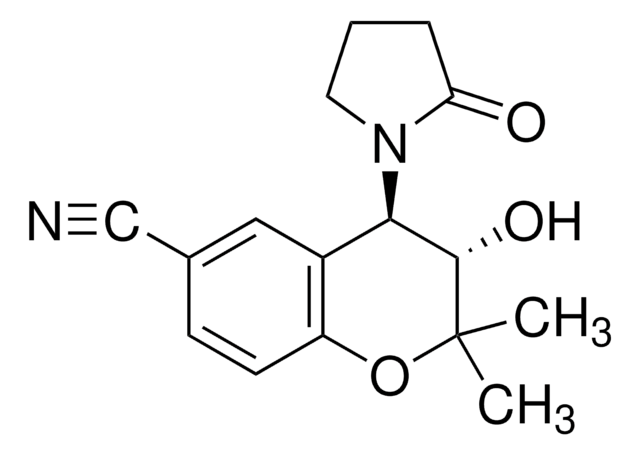Kluczowe dokumenty
M4145
Minoxidil
≥99% (TLC), powder, potassium channel activator
Synonim(y):
6-(1-Piperidinyl)-2,4-pyrimidinediamine 3-oxide, 6-(1-Piperidinyl)pyrimidine-2,4-diamine 3-oxide
About This Item
Polecane produkty
Nazwa produktu
Minoxidil, ≥99% (TLC)
Próba
≥99% (TLC)
mp
272-274 °C (dec.) (lit.)
inicjator
Johnson & Johnson
ciąg SMILES
NC1=CC(=NC(=N)N1O)N2CCCCC2
InChI
1S/C9H15N5O/c10-7-6-8(12-9(11)14(7)15)13-4-2-1-3-5-13/h6,11,15H,1-5,10H2
Klucz InChI
ZIMGGGWCDYVHOY-UHFFFAOYSA-N
informacje o genach
human ... KCNJ1(3758)
Szukasz podobnych produktów? Odwiedź Przewodnik dotyczący porównywania produktów
Powiązane kategorie
Zastosowanie
- in dermal papilla spheroid model, to study the effect of hair regeneration
- administered orally to experimental rats, in the approach to identify biomarkers of drug induced vascular injury
- administered via oral gavage to nonhuman primate model in order to study its effect on tilt responses
Działania biochem./fizjol.
Cechy i korzyści
Hasło ostrzegawcze
Warning
Zwroty wskazujące rodzaj zagrożenia
Zwroty wskazujące środki ostrożności
Klasyfikacja zagrożeń
Acute Tox. 4 Oral - Eye Irrit. 2 - Skin Irrit. 2 - STOT SE 3
Organy docelowe
Respiratory system
Kod klasy składowania
11 - Combustible Solids
Klasa zagrożenia wodnego (WGK)
WGK 3
Środki ochrony indywidualnej
dust mask type N95 (US), Eyeshields, Gloves
Wybierz jedną z najnowszych wersji:
Masz już ten produkt?
Dokumenty związane z niedawno zakupionymi produktami zostały zamieszczone w Bibliotece dokumentów.
Klienci oglądali również te produkty
Nasz zespół naukowców ma doświadczenie we wszystkich obszarach badań, w tym w naukach przyrodniczych, materiałoznawstwie, syntezie chemicznej, chromatografii, analityce i wielu innych dziedzinach.
Skontaktuj się z zespołem ds. pomocy technicznej